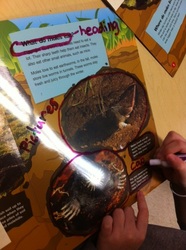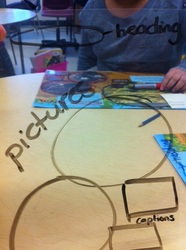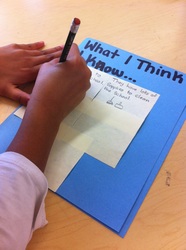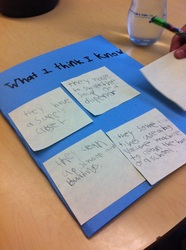Those who do implement will struggle to move past the mechanical phase and into the routine, refinement and integration phases. Very few teachers who adopt a new innovation will find themselves in the highest, or renewal, phase of CBAM.
I have found that reflecting on new learning as soon as possible after initial exposure, and then making immediate plans to incorporate the new practice (assuming I find it valuable for my students and/or myself) can greatly increase the chances of becoming at least a routine user of an apparently high yield strategy.
This past weekend, I blogged about my experiences at RFTLOI; this morning I implemented two strategies I picked up from the sessions I attended.
The first strategy we used was “mapping the text”
Next, I used a new twist of an old stand-by: The RAN chart (Tony Stead)!
Although this strategy is meant to be used with non-fiction text, I was so eager to make use of it immediately, that I incorporated it into a pciture book read-aloud I had planned, called the A+ Custodian.
I had students create a little "RAN folder", to which they could affix sticky notes, and move them around as we read together.
This afternoon, I planned future lessons using the same strategies: I plan to use the RAN folders in small guided reading groups later this week, with non-fiction text from Teaching Kids News.
I also prepared a lesson for the week after March Break, making use of a third idea I picked up at the conference, namely the poem from non-fiction text keywords. (Stay tuned for upcoming blog post and student samples in a few weeks!!)
I am excited about my renewed instructional repertoire, and I look forward to refining these new strategies in my classroom and beyond. Yep, just put me on the fast track to the refinement and integration phases of CBAM!









 RSS Feed
RSS Feed